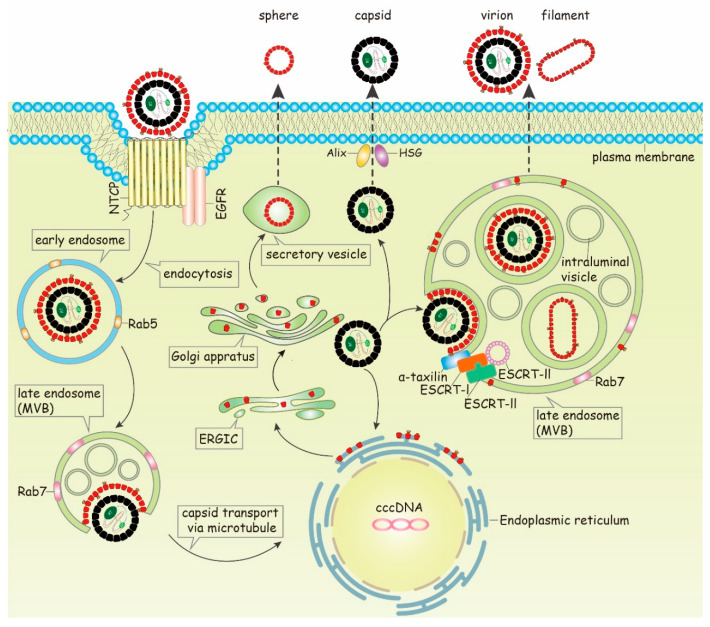Figure 2.
Model of HBV intracellular trafficking. After binding to the receptor complexes (NTCP = Sodium taurocholate cotransporting polypeptide), the virions are transported to Rab5-containing early endosomes followed by the Rab7-containing late endosomes. After their release into cytoplasm, the nucleocapsids are delivered to the nuclear pore complex by a directed transport involving microtubules. In the nuclear pore complex the nucleocapsid disassembles and the viral DNA genome is imported into the nucleus and converted to cccDNA (covalently closed circular DNA). In the early phase of the infection process, de novo synthesized nucleocapsids are transported back to the nuclear pore complex to augment the cccDNA pool in the nucleus. Later in the infection process, the surface proteins are synthesized at the rough ER (endoplasmatic reticulum) and transported through the ERGIC (ER-Golgi-intermediate-complex). Spheres are secreted by the constitutive secretory pathway. After envelopment of the nucleocapsid, the release of virions as well as of filaments is ESCRT/MVB-dependent and mediated by α-taxilin. In addition, non-enveloped assembled (nucleo)capsids are secreted as naked capsids involving Alix and HSG. (MVB = multivesicular bodies; ESCRT = endosomal sorting complexes required for transport; EGFR = epidermal growth factor receptor)

